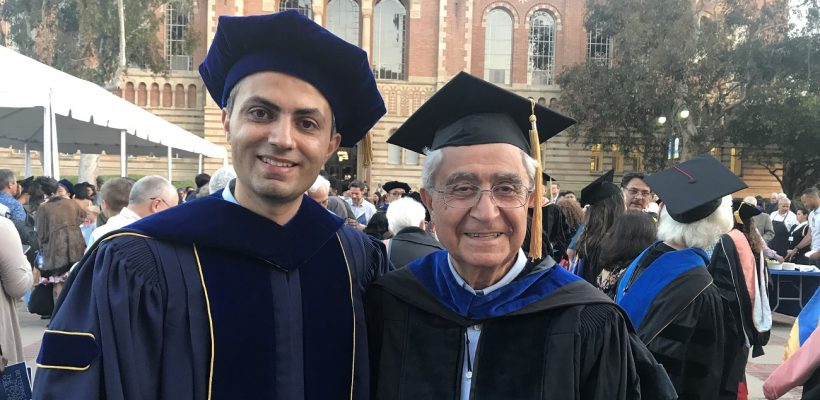
Creativity, Generosity and Persistence Give a Boost to Post-Earthquake Research
3 min readHow the Spitak post-earthquake research project became a reality, without doubt, has involved creativity, generosity, and persistence well beyond the required research expertise and specialized acumen in the field. As one looks back on the past thirty years since the start of research investigating the health of the 1988 Spitak earthquake survivors, one comes across significant milestones that merit to be told. Beyond those, however, what separates this feat from other notable scholarly accomplishments is the aspect of giving. Believing in the power of research and giving to support it reach farther and extend to thousands more people than would individual philanthropic endeavors.
The project initiator, Dr. Haroutune Armenian, President Emeritus of the American University of Armenia (AUA), Professor in Residence in the Department of Epidemiology at the University of California, Los Angeles (UCLA) Fielding School of Public Health, and also a watercolor artist, has, through persistent determination, generosity and creativity, channeled new funding for the next phase of the Spitak post-earthquake research he had pioneered in 1990. Thirty-two of his watercolor paintings, exhibited at the UCLA Kerckhoff Art Gallery back in 2012, were sold then creating an $11,000 fund at the UCLA Fielding School of Public Health earmarked for research at AUA. The total amount was recently granted to Dr. Vahe Khachadourian (MPH ’11), Assistant Professor at AUA and recipient of the UCLA outstanding graduating student award. The grant will support the next phase of the investigation.
This longitudinal research project, which now embarks into its fifth phase, had ensued from the December 7, 1988 Spitak earthquake that shook northern Armenia ravaging shops, schools, and residential buildings, killing over 25,000 people, and injuring four times as many. People and organizations from different parts of the world reached out to help. Dr. Armenian visited the devastated region in January 1989 and, seeing the extent of destruction and state of the survivors, he was convinced that a study examining the long-term health consequences of the disaster was crucially important and would significantly contribute vital new knowledge to the field and to discovering innovative prevention protocols.
With an initial funding from the Armenian Relief Society, Dr. Armenian initiated a longitudinal cohort study that focused on 35,000 employees from the Ministry of Health of the Republic of Armenia (then in the Soviet Union) and their first-degree relatives living in the earthquake region on the day prior to the earthquake. This was the first long-term epidemiological cohort study to investigate health consequences in the aftermath of an earthquake.
Since the launch of the research, four follow-up cohort studies have been conducted. The fourth and full-scale follow-up study was awarded a grant by the Turpanjian Family Educational Foundation, largely resulting from a preceding feasibility study conducted by Dr. Khachadourian, then a graduate student at the AUA Turpanjian School of Public Health (SPH).
The research results have revealed a strong association between the extent of loss and adverse health outcomes, such as high levels of morbidity and mortality among those more severely impacted by the earthquake, as well as post-traumatic stress disorder and depression rates as high as 50% in the early years following the devastation. These studies have produced a number of articles published in internationally reputable peer-reviewed journals and continue to serve as an important research platform for AUA SPH students.
Moreover, the fourth follow-up phase was unique in its research design and methodology used for evaluating health effects among disaster survivors. Later, as a doctoral student at UCLA and within the framework of his doctoral dissertation research, Dr. Khachadourian identified causal inferences and machine learning algorithms that would help formulate strategies to mitigate adverse health consequences in the aftermath of an earthquake. In this new phase of the study, Dr. Khachadourian will conduct further follow-up with a sub-sample of the initial cohort to shed more light on the long-term health consequences of disaster. The results are expected to enable designing effective post-disaster interventions that would ameliorate further the adverse health conditions of disaster victims.
Founded in 1991, the American University of Armenia (AUA) is a private, independent university located in Yerevan, Armenia, affiliated with the University of California, and accredited by the WASC Senior College and University Commission in the United States. AUA provides local and international students with Western-style education through top-quality undergraduate, graduate, and certificate programs, promotes research and innovation, encourages civic engagement and community service, and fosters democratic values.
